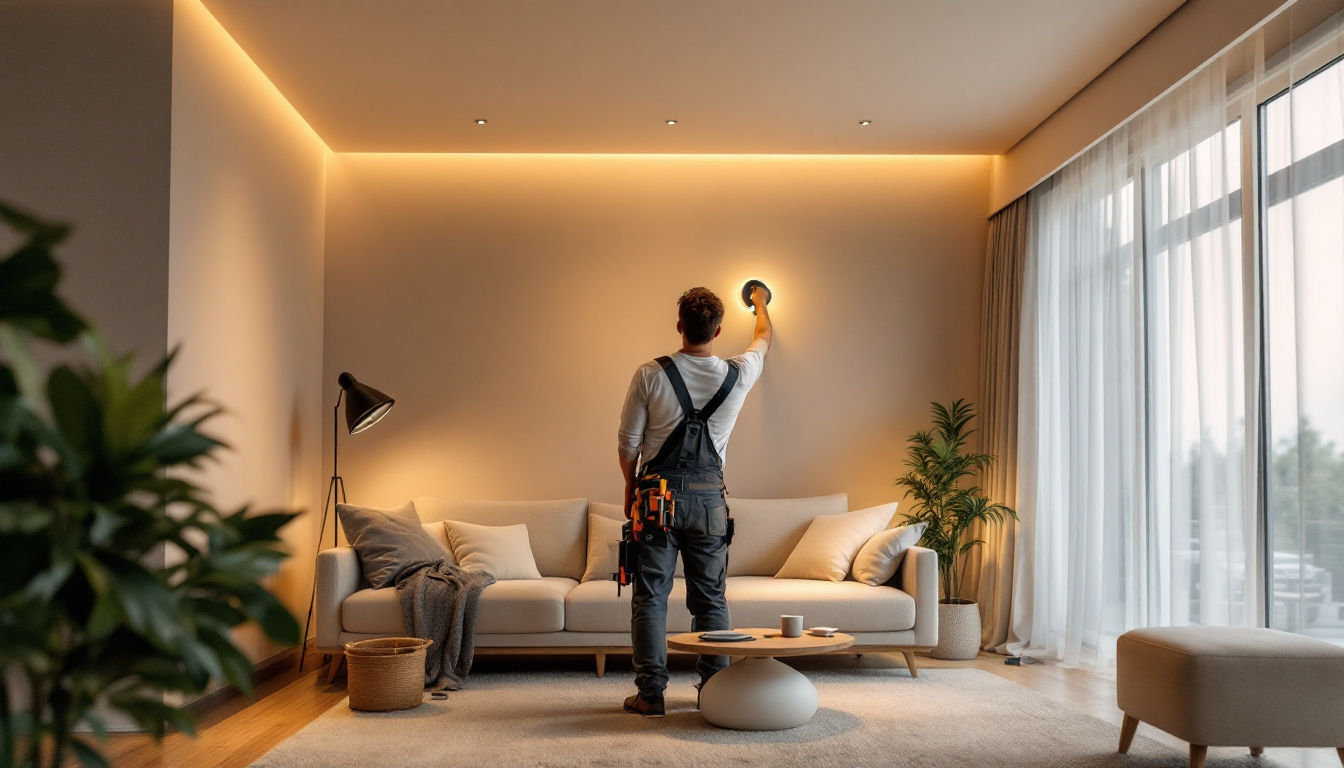
The evolution of lighting technology has transformed the way contractors approach their projects. Among the most significant advancements is the introduction of the 120V LED light bulb, which has become a staple in residential and commercial lighting. This article serves as a comprehensive guide, providing lighting contractors with essential resources and insights to master the use of 120V LED bulbs in their work.
Before diving into the resources available for contractors, it’s crucial to understand what 120V LED light bulbs are and why they are favored in modern lighting applications. These bulbs operate on standard household voltage, making them versatile for various settings. Unlike their incandescent counterparts, which can generate excessive heat and consume more energy, 120V LED bulbs provide a more sustainable lighting solution that aligns with contemporary energy-saving initiatives.
One of the primary advantages of 120V LED bulbs is their energy efficiency. Compared to traditional incandescent bulbs, LEDs consume significantly less power, leading to lower energy bills for clients. Additionally, they have a longer lifespan, often lasting up to 25,000 hours, which reduces the frequency of replacements. This longevity not only saves money but also minimizes waste, making them an environmentally friendly choice.
Furthermore, 120V LED bulbs emit less heat, which contributes to a safer environment, especially in enclosed spaces. Their durability also makes them resistant to shock and vibration, making them ideal for both indoor and outdoor applications. With advances in technology, many LED bulbs now come with dimmable options, allowing users to customize their lighting to suit different moods and activities. This flexibility enhances the overall user experience, making LEDs a preferred choice for both residential and commercial lighting needs.
120V LED bulbs are highly versatile, suitable for a variety of applications. In residential settings, they can be used in fixtures such as recessed lighting, pendant lights, and chandeliers. Their ability to provide bright, clear light makes them perfect for kitchens, living rooms, and home offices. Moreover, the variety of color temperatures available—from warm white to cool daylight—allows homeowners to create the perfect ambiance for any occasion, whether it’s a cozy family dinner or a productive work session.
In commercial environments, these bulbs are equally effective. They can illuminate retail spaces, office buildings, and warehouses, enhancing visibility while contributing to energy savings. The use of 120V LED bulbs in signage and display lighting can significantly improve product visibility, attracting more customers and potentially increasing sales. Contractors should consider the specific needs of each project to determine the best type of 120V LED bulb to use. Additionally, integrating smart lighting solutions with 120V LEDs can further optimize energy efficiency and control, allowing businesses to adapt their lighting systems to their operational hours and occupancy levels.
To master the use of 120V LED light bulbs, contractors need access to reliable resources. This section outlines some of the most valuable tools and information sources available.
Understanding the specifications of different LED bulbs is essential for contractors. Manufacturers often provide detailed guidelines on lumen output, color temperature, and energy consumption. Familiarizing oneself with these specifications helps contractors make informed decisions when selecting bulbs for various projects.
Moreover, manufacturers may offer installation manuals and troubleshooting guides, which can be invaluable during the installation process. Keeping these resources readily available can streamline project workflows and enhance overall efficiency.
With the rapid pace of technological advancements, ongoing education is vital for lighting contractors. Many organizations and manufacturers offer online training sessions and webinars focused on LED lighting technologies. These platforms provide insights into the latest trends, installation techniques, and best practices.
Participating in these educational opportunities not only enhances knowledge but also allows contractors to network with industry professionals. Engaging with peers can lead to valuable discussions and the sharing of experiences, further enriching the learning process.
Joining industry associations can provide contractors with access to a wealth of resources. These organizations often publish newsletters, research reports, and case studies that focus on lighting technologies, including 120V LED bulbs. They also host trade shows and conferences where contractors can explore the latest products and innovations in the lighting industry.
Attending these events allows contractors to connect with suppliers, gain insights into emerging technologies, and discover new business opportunities. The exposure to cutting-edge products can significantly enhance a contractor’s ability to deliver high-quality lighting solutions.
Installation is a critical aspect of working with 120V LED light bulbs. Following best practices ensures optimal performance and longevity of the bulbs. Here are some key considerations for contractors during installation.
Before installing a 120V LED bulb, it is essential to verify that the fixture is compatible. Not all fixtures are designed to accommodate LED technology, and using an incompatible fixture can lead to performance issues or even damage to the bulb. Contractors should check the manufacturer’s recommendations regarding bulb types and wattage limits.
Additionally, dimmable LED bulbs require compatible dimmer switches. Using standard dimmers with LED bulbs can result in flickering or reduced performance. Therefore, selecting the right components is crucial for achieving the desired lighting effect.
When installing 120V LED bulbs, contractors should follow standard electrical safety practices. This includes turning off the power supply before beginning any work and using appropriate personal protective equipment. Proper handling of the bulbs is also important; contractors should avoid touching the glass part of the bulb with bare hands, as oils from the skin can affect performance and lifespan.
Additionally, ensuring that the bulbs are securely fitted into their sockets can prevent issues such as flickering or intermittent lighting. Following the manufacturer’s installation instructions will help achieve the best results.
After installation, testing the lighting system is essential. Contractors should turn on the lights to ensure that all bulbs are functioning correctly. If any bulbs flicker or fail to illuminate, troubleshooting may be necessary. This could involve checking the connections, verifying compatibility, or replacing faulty components.
Keeping a troubleshooting guide handy can aid in quickly identifying and resolving issues. Regular maintenance checks can also help prolong the lifespan of the lighting system and ensure consistent performance.
As energy efficiency becomes increasingly important, contractors must understand the sustainability benefits of using 120V LED light bulbs. These bulbs not only reduce energy consumption but also contribute to a lower carbon footprint.
Contractors should be equipped to calculate the energy savings associated with switching to 120V LED bulbs. By comparing the wattage of traditional incandescent or fluorescent bulbs to that of LED options, contractors can provide clients with clear estimates of potential savings on energy bills. This information can be a compelling selling point when discussing lighting options with clients.
Additionally, many utility companies offer rebates or incentives for energy-efficient lighting upgrades. Contractors can assist clients in navigating these programs, further enhancing the value of their services.
Incorporating 120V LED light bulbs into projects aligns with green building practices. Many clients are increasingly interested in sustainable solutions, and offering energy-efficient lighting options can set contractors apart from competitors. By promoting the use of LED technology, contractors can contribute to environmentally friendly building practices while meeting client demands.
Furthermore, understanding the principles of sustainable design can help contractors integrate lighting solutions that enhance overall building performance. This includes considering factors such as natural light utilization and the impact of lighting on occupant well-being.
The lighting industry is continually evolving, and staying informed about future trends is essential for contractors. Understanding where the industry is headed can help contractors anticipate changes and adapt their practices accordingly.
One of the most significant trends in lighting is the rise of smart technologies. Smart LED bulbs can be controlled remotely via smartphones or integrated into home automation systems. This allows for greater flexibility and customization in lighting design.
Contractors should familiarize themselves with smart lighting options and the associated installation requirements. Offering smart lighting solutions can enhance the value of a contractor’s services and meet the growing demand for intelligent home and building systems.
As research and development continue, advancements in LED technology are expected to enhance performance and efficiency. Innovations such as improved color rendering, tunable white light, and increased lumen output are on the horizon. Contractors should stay updated on these developments to provide clients with the best possible lighting solutions.
Additionally, understanding the implications of these advancements can help contractors make informed recommendations, ensuring that they remain competitive in the market.
Mastering the use of 120V LED light bulbs is essential for lighting contractors looking to provide high-quality, energy-efficient solutions. By leveraging the resources available, understanding installation best practices, and staying informed about industry trends, contractors can enhance their expertise and deliver exceptional results for their clients.
As the lighting landscape continues to evolve, embracing new technologies and sustainable practices will not only benefit contractors but also contribute to a brighter, more energy-efficient future. By prioritizing education and staying connected to industry developments, lighting contractors can position themselves as leaders in the field.
Ready to elevate your lighting projects with the best 120V LED light bulbs on the market? Look no further than LumenWholesale, where we provide contractors with exceptional, spec-grade lighting products at unbeatable wholesale prices. Say goodbye to local distributor markups and hello to high-performance lighting that meets the highest industry standards. With our hassle-free bulk buying and free shipping, you can stock up on premium lighting solutions and enjoy the best value without any hidden fees. Don’t compromise on quality or cost. Wholesale Lighting at the Best Value is just a click away. Experience the LumenWholesale difference today!

Discover the secrets of successful lighting projects with Arthur’s Island Kitchen.

Discover expert electrical supply lighting advice for contractors, learn key tips to enhance project efficiency, and optimize lighting solutions—boost your expertise today!.

Discover the frequent pitfalls lighting contractors face when installing LED room lights.

Discover effective strategies to illuminate your team’s potential with expert training in lighting.